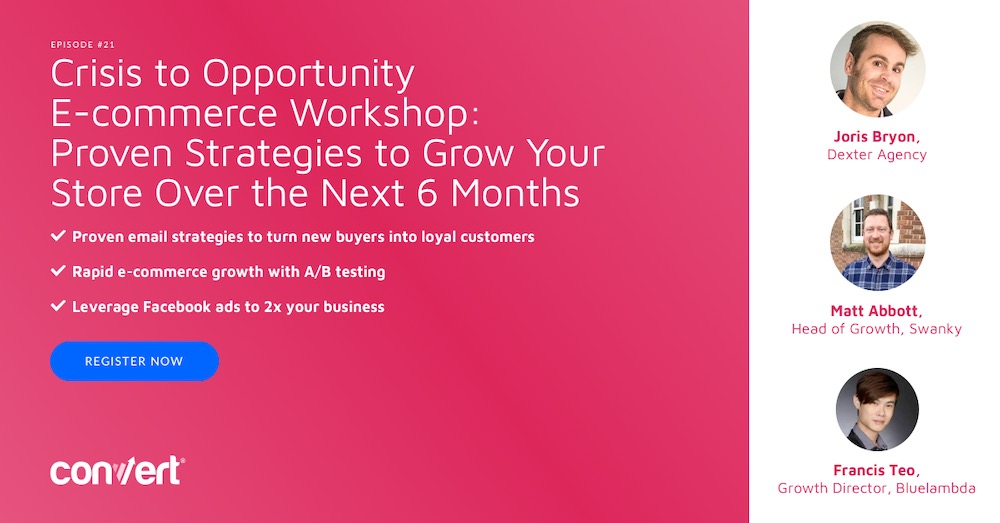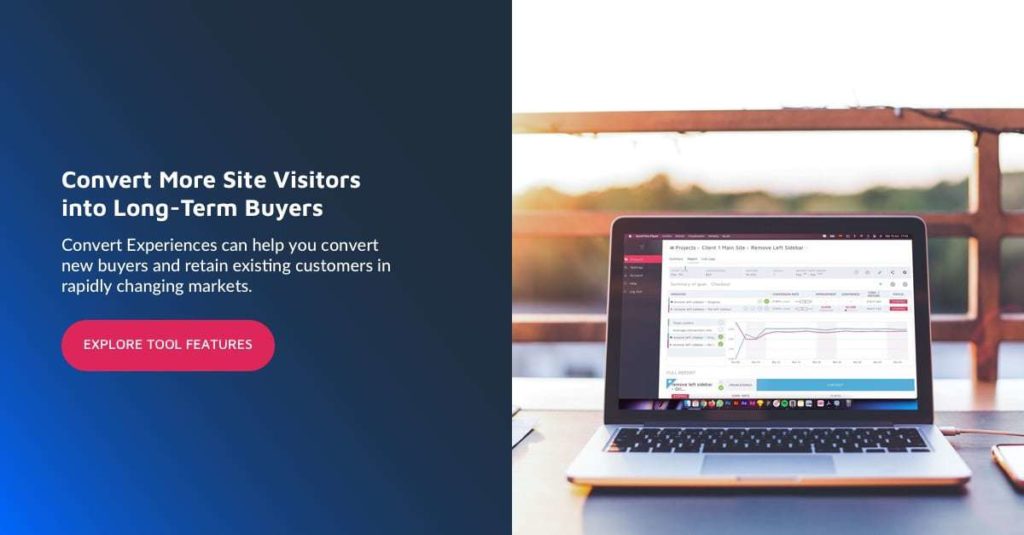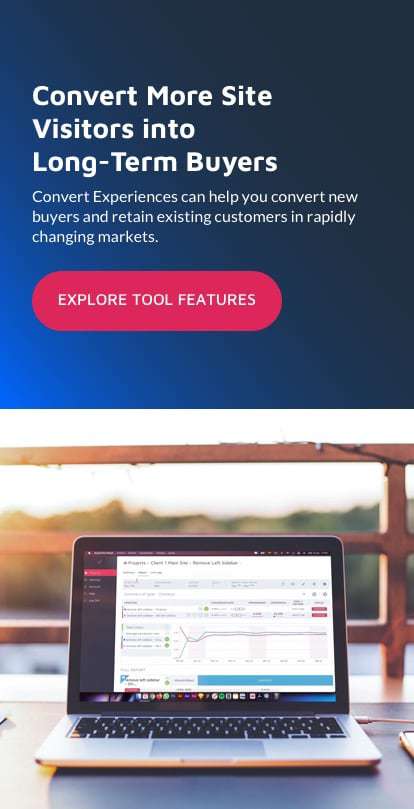The Fascinating 40-Year Evolution of User Experience in eCommerce

At the start of the 1980s, a husband and wife sat together at a dining room table and conceived what would be the world’s first eCommerce website. Alexander Randall was Ph.D. in General System research and his wife, Cameron Hall, had a degree in economics. Both combined their knowledge to create a marketplace for used computers.
Boston Computer Exchange would be a precursor to eBay and, eventually, the massive eCommerce industry that exists today.
In the four decades since it was conceived, eCommerce has gone through a profound evolution. The purpose of an online business back in the day was nothing more than generating sales and attracting more buyers.
However, eCommerce sites today have the responsibility of retaining buyers, inspiring loyalty, and promoting a positive brand image. Pricing, shipping, customer support, and loading time are some factors that play a significant role in achieving these objectives.
But even if a retailer gets all of this right — it would be ineffective without creating a unique, attractive, and smooth user experience.
UX Can Make or Break eCommerce Websites
User experience or UX includes all aspects of the user’s interaction with a business and the products or services it has to offer. It guides buyers through the entire purchasing journey.
For sites that sell products or render services, the entire purpose of UX is to turn a curious visitor into a valuable buyer (…) Websites try their best to create a straightforward and enjoyable shopping experience for consumers. Those who fail; end up losing out.
Says Alex Reynolds of EMUCoupon.
According to the Baymard Institute, 21% of American online shoppers abandon their carts due to a long and complicated checkout process. Some customers don’t even get to this point of the purchasing journey due to a subpar browsing speed and complicated interfaces.
Nowadays, smartphones and 4G connectivity are drivers of change in UX. Before the inception of these technologies, customer experience on eCommerce websites was a bit different.
The History of eCommerce UX: Amazon & eBay
Amazon and eBay were two early entries into the world of eCommerce. Since online buying and selling was a novel concept back then, most of the effort went into explaining how these services worked.
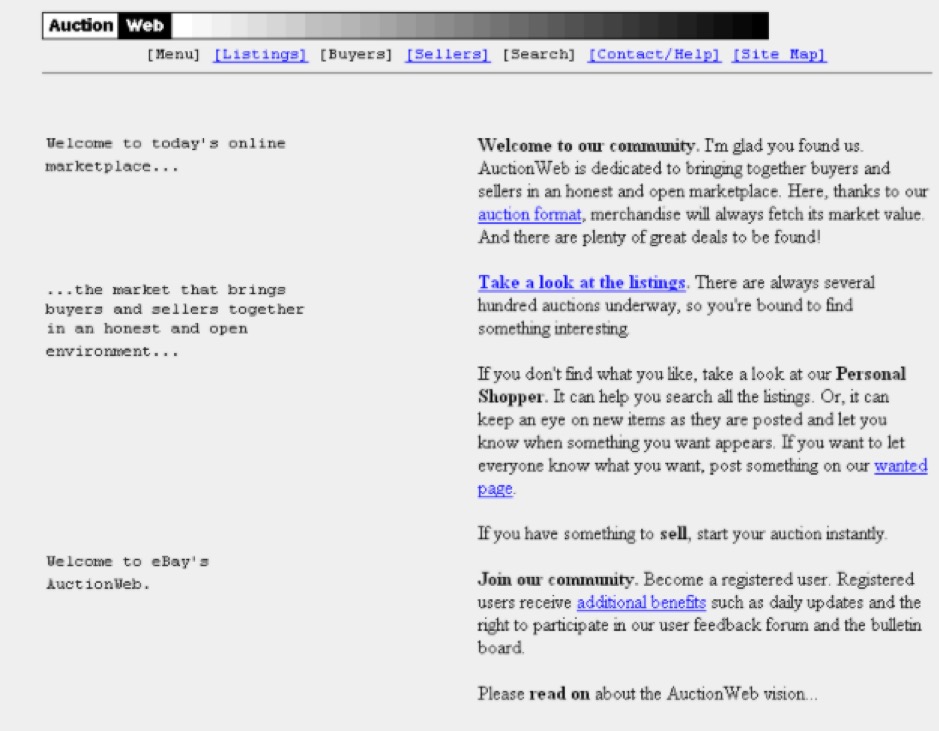
eBay’s homepage in 1996 was unlike anything you’d find on the web today. The lack of visual design was common in this era, as the internet speed was low and websites were fairly basic.
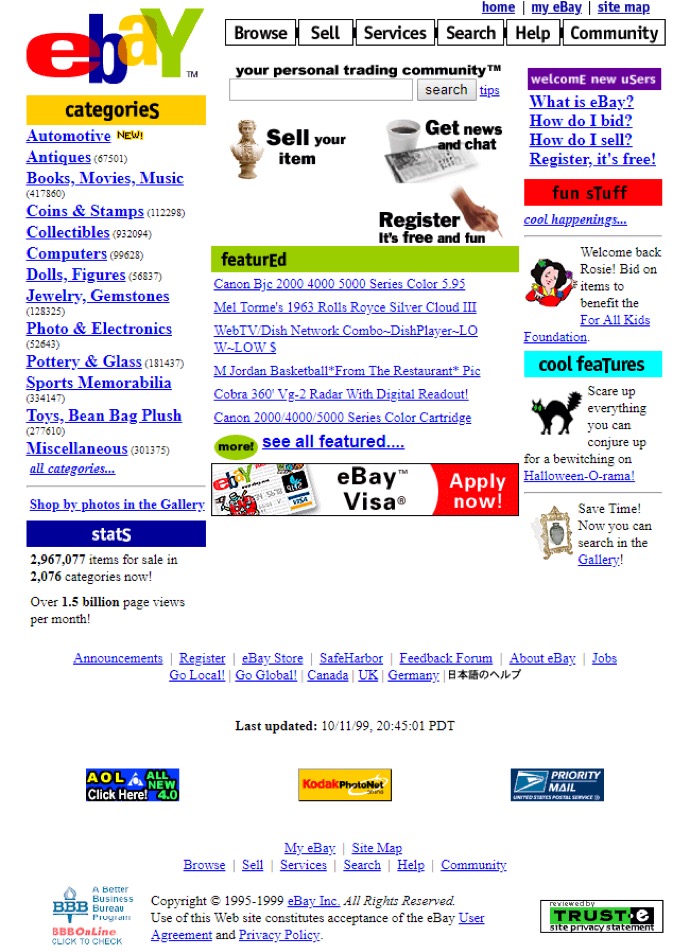
In later years, the pages became much more colorful and cluttered with content. This was pretty common in 1999, as it wasn’t yet the age of interactive sliders that could display large information within small spaces. In those days, most online retail sites had a barrage of hyperlinks.
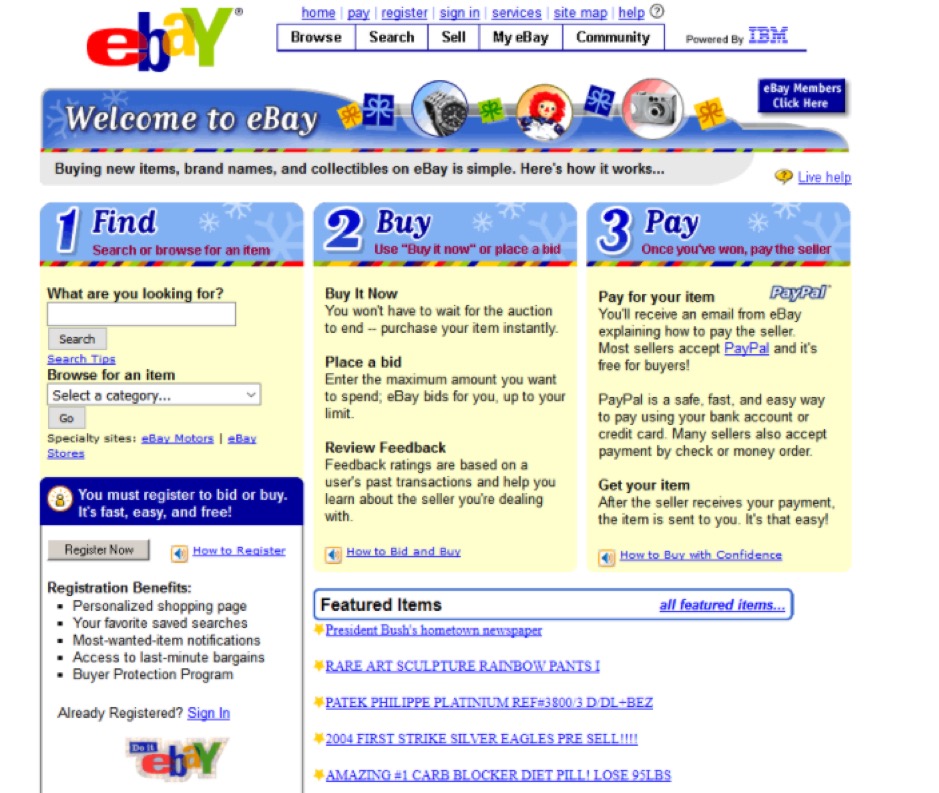
The year 2003 saw a much-improved version of eBay. Visitors weren’t bombarded with text links on the homepage. The information provided was much clearer and more concise. Users could select a category from a drop-down navigation menu, making the search process a whole lot easier. eBay had now fully integrated PayPal to make the payment process more convenient.
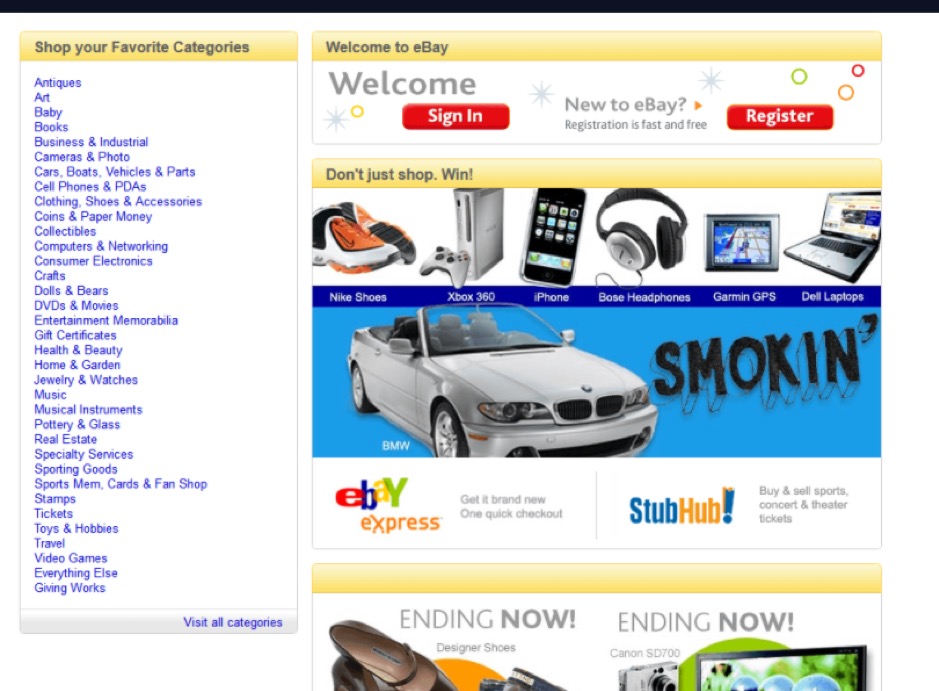
In 2008, eCommerce had developed a certain aesthetic. Interactive images became important tools in generating leads. Deals and discounts captured large spaces on the pages. It was the time that coupons became digitized and retailers were luring in customers with generous deals and discount offers.
Amazon went through a similar transformation. Before it was worth $1.7 trillion and its owner was the richest man alive, the retail giant of today was an online bookstore with a simplistic web design.
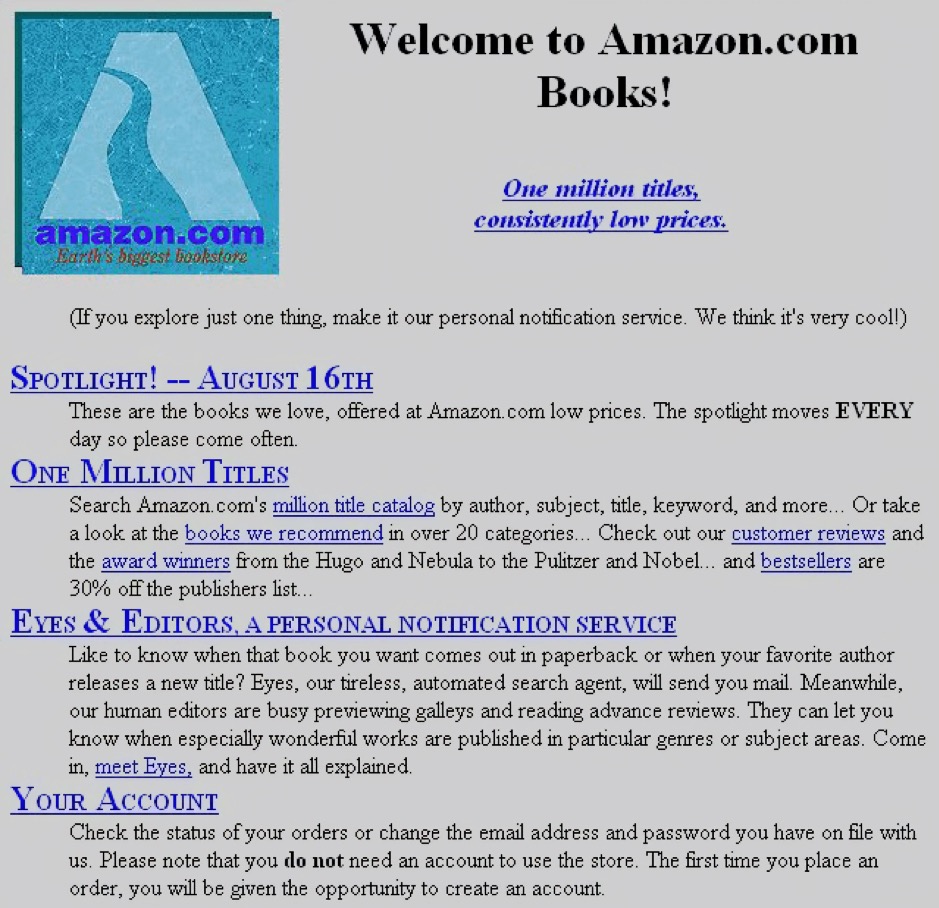
Much like eBay, the hyperlinks navigated Amazon’s customers towards the site’s latest offering. The website had a typical 90s look with no carousels and search bars.
A search option was undoubtedly the biggest omission. Visitors had to browse different categories to search for the books they desired, which made the whole process time-consuming.
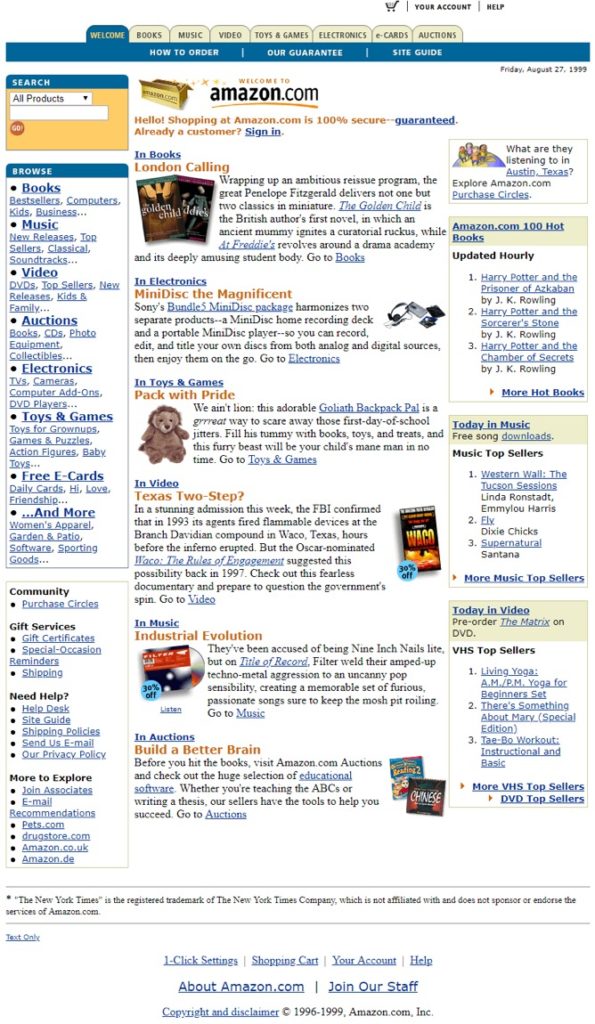
By 1999, as Amazon moved beyond books, the website became even more descriptive. Small blocks of text were marketing everything from CDs to stuffed toys. Customers could now look for products through the search bar even though it wasn’t super-accurate. The biggest feature that Amazon introduced was its now patented 1-Click buying option.
It was truly a game-changer as customers could now order without filling in their address and payment information again and again.
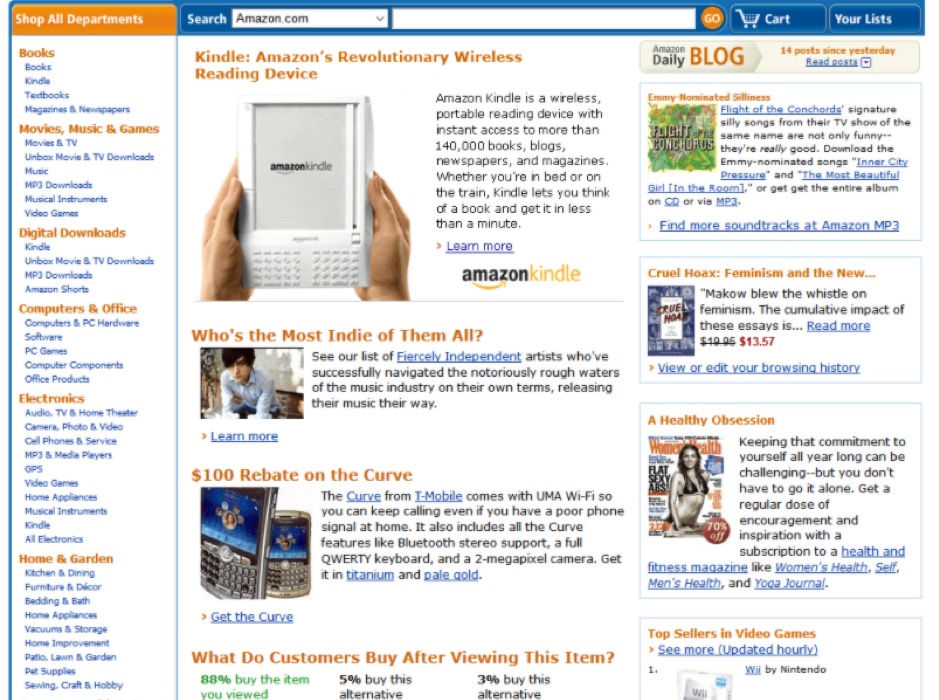
Around 2008, online retailers started getting creative and Amazon was leading the charge. Users could now create wish lists and receive personalized offers based on their shopping history. Meanwhile, Amazon’s search tool became extremely efficient with its autocompletion, filtering, and categorization.
The website was now highly-structured and extremely easy-to-navigate. Feature information, comparisons, reviews, shipping cost, and ratings were some aspects of the site that attracted thousands of buyers every day.
What Changed Over the Years?
Amazon and eBay had similar journeys over the years. Here’s how the user experience in these sites has evolved over the past few decades.
- Like most websites in the 1990s, both sites featured large text documents that were strung together by inline links. Later on, progress in CSS and Javascript meant the website featured more images along with small blocks of text.
- Users, in the beginning, had to browse these sites to find the product they wanted to purchase. The search option was integrated a few years later but it lacked accuracy. It was somewhere in the late 2000s that both Amazon and eBay search bars became precise.
- Both sites were initially focused on just buying and selling. Later on, they worked to create a holistic shopping experience that included personal recommendations, product overviews and price comparisons among other things.
From seeking out products in catalogs to getting personalized recommendations, eCommerce UX has come a long way.
Experimentation Brought Us Here
The growth and evolution of eCommerce have been driven, in many ways, by Jeff Bezos’ love of experimentation. Amazon integrated customer reviews, top seller lists, and personalizations without thoroughly testing these features.
In the early days, the online store took no time to release new improvements. As a result, some of its experiments paid off, while others, not so much. Amazon bought in a culture of testing around 2002 when it started making personalized recommendations based on an algorithm rather than going for human-powered editorial teams. This decision was taken after the results from split tests had favored the former.
In 2011, Amazon created its own platform of experimentation called Weblab. Thousands of A/B tests have since been performed on this platform to design the best possible user experience for the masses.
For ecommerce businesses that aren’t Amazon (basically, everyone else), experimentation is what’s needed to carve out a niche in a crowded marketplace.
Not sure where to start with experimentation?
Check out these articles:
How to Set-Up and Optimize an Ecommerce Conversion Funnel to Drive Sales
4 Challenges You Need To Conquer When Optimizing Ecommerce Websites
UX in the Era of Touch and Smartphones
It wouldn’t be wrong to say that Steve Jobs and his well-documented hate for buttons has shaped how websites are designed today. The rise of the iPhone made touch screens almost ominous, forcing designers to create websites for human fingers rather than mouse cursors.
eCommerce websites were quick to adapt. Around the 2010s, Amazon, eBay, and relatively newer platforms like Etsy, were designing a complete shopping experience that was more visual, colorful, and focused on the emerging smartphone demographic.
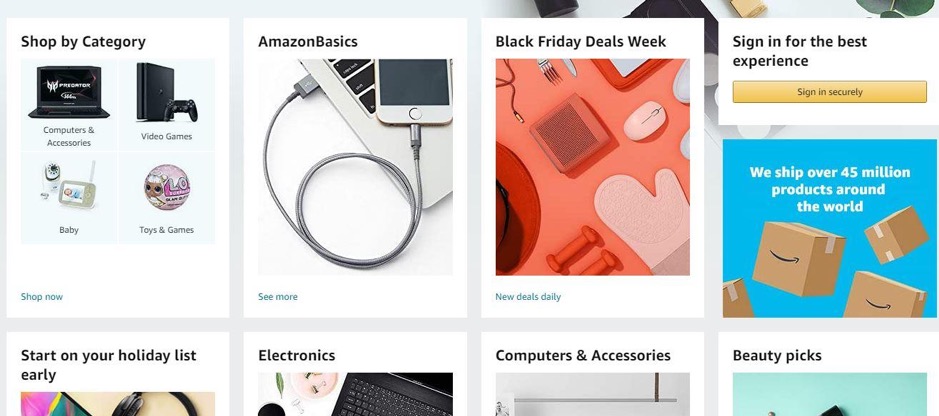
Just as UX design was evolving, PCs were progressing to include faster processors and larger memory. Designers now had the room to innovate — and innovate they did. The images became realistic, the text richer and interactions got fluid.
In fact, eCommerce sites would try to replicate in-store buying with high-resolution pictures of the products, showing customers exactly what they were paying for. Along with design changes, online shopping became personalized. Sites created profiles of consumers based on their location, search history, and even gender and age group if they had access to such information.
What’s Next for User Experience?
Most innovations in UX these days are driven by AI. Among the technologies that are optimizing online retail, chatbots have been used to varying degrees of success. Retailers have used basic chatbots that have limited functionality. But this may change going forward as bots that are hyper-focused on streamlining purchasing for customers will take center stage.
Perhaps the biggest change that awaits eCommerce UX is the customer’s ability to customize the website as per their preferences. While some sites allow users to make slight adjustments, in the coming days, buyers might get to choose color and type schemes along with many other aspects of the site.
Instead of trying to understand what they want, UX designers will let customers take charge and design an experience that best fits them.
Meanwhile, voice guidance might be the next big thing in UX. In place of a chatbot, customers in the next few years may be guided by a voice that will explain the website’s features and the latest products. This will help eCommerce sites produce something similar to an in-store salesperson guiding potential customers.
Immersive virtual events can be another way for online retail stores to keep customers engaged. Due to the ongoing pandemic, many events this year took place virtually. This trend might continue post-pandemic too, as many people have taken a liking to attending conferences and exhibitions from the comfort of their homes. For online retailers, this means entire product launchings taking place virtually.
Whether designers integrate these new features or not — the evolution of UX in eCommerce will continue at an accelerated pace as it has for the last four decades.


